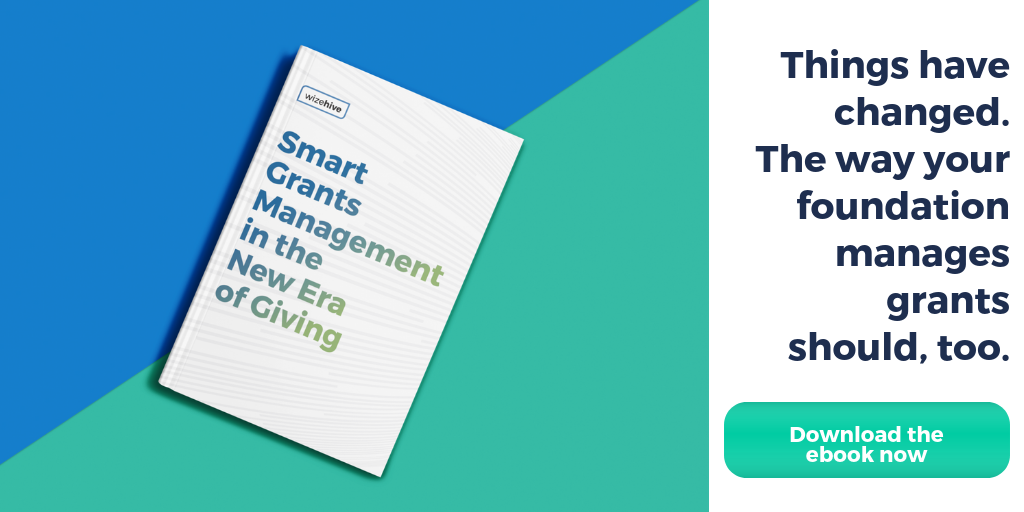Mission creep isn’t just a concern for nonprofits. It’s also a challenge for corporate philanthropic programs that expand beyond their original intent.
It’s tempting to pivot when a disaster rocks the world. Or when a worthy cause tugs at your heart. Or when a trending issue is covered in the news day in and day out. But, the success of your program depends on staying focused on the mission.
Here are five steps to take to make certain you keep your CSR programs on track:
-
Align your mission. Most businesses have done their due diligence to create a mission and indoctrinate their employees in it. Therefore, it just makes good business sense to align your CSR programs with this mission -- it is, after all, the heartbeat of your company. One example of a corporation that has aligned its philanthropy with its corporate mission is computer technology and consulting company IBM. IBM helps companies solve complex problems. So, it follows that IBM’s Service Corps allows employees to put their problem-solving skills to work to address high-priority issues in education, sustainability, health, and economic development.
After Hurricane Florence devastated parts of North Carolina in 2018, IBM employees applied to join a corps of experts that would be sent to the area. The problem to be solved? It was a challenge to manage the sudden and huge influx of donations and volunteers. Ultimately, a dozen IBM employees from around the world spent a month exploring new ways to coordinate disaster responses, donations, and volunteers. This resulted in not only improvements to the situation in North Carolina but also lessons learned that provide guidance to any area preparing to respond to natural disasters.
-
Set specific goals. After aligning your philanthropic mission with your corporate mission you should commit to specific goals. Goal setting will help develop new behaviors, maintain your focus and generate momentum. An added benefit is you will have a benchmark against which to measure success.
Take, for example, The FruitGuys, a certified B-Corporation that sells farm-fresh fruit and snacks. They aligned their business and philanthropic missions and established The FruitGuys Community Fund. The fund's hyper-focused goal is to support small farm sustainability projects that will have a big impact on the environment, local food systems, and farm diversity.
Over the past decade, the fund has awarded nearly 90 grants totaling more than $341,000 dollars to small-scale farmers.
Thanks to focus, The FruitGuys philanthropic program continued to produce tangible results even under the many challenges of the pandemic. In fact, the impact of these grants was especially clear as it provided for businesses particularly vulnerable in that time -- farmers of color and those who are women and veterans. As a result, beneficiaries continue to contribute to the local food system ensuring community food security.
-
Share your goals with others. Another way to ward off mission creep is to publicly share your goals with others. If you don’t think you can hold yourself accountable, let employees, customers, and other stakeholders do it for you! So get the word out...on your website, in your newsletters, on social media, in company meetings...tell the world how you intend to help the world.
There’s another benefit to being vocal about your philanthropic goals: Consumers expect it. According to a survey from Markstein and Certus Insights, 70 percent of consumers want to know how businesses support causes.
-
When in doubt, double down. When you’re tempted by the latest cause, issue, or trend that’s attracting philanthropic support, revisit your stated goals and consider how you might go deeper. For example, with a purpose to “inspire healthy habits for real life”, WW, which is Weight WatchersⓇ reimagined, went further and launched the WW Wellness Impact Award to help marginalized communities break down some of the barriers to wellness. WW chose five organizations “dedicated to the advancement of wellness in communities of color” to each receive a grant of $15,000. Instead of being distracted by other, albeit important, issues, WW used the award to double down on its commitment to inspiring health in all communities.
-
Explain your “no”, reinforce your “yes”. Explaining your reasons for turning down an applicant is good for both your company and the nonprofit. First, for the company, articulating your grantmaking goals helps reinforce and clarify them -- your colleagues, and even you at times, may benefit from the reminder so as to keep your programs on track. Second, it’s useful for applicants because it clears up any confusion on what/who your grants benefit so that, ultimately, you receive fewer inquiries from applicants that aren’t a good fit.
You can avoid mission creep in your corporate philanthropic programs with alignment, goals, promotion, focus, and communication. Temptations to deviate will abound, but you can stay the course because you know exactly where you are headed.
To find out how WizeHive can support you across your corporate philanthropy programs, schedule a demo today.
